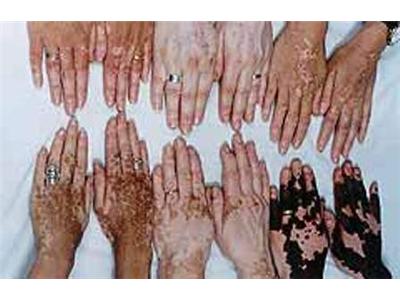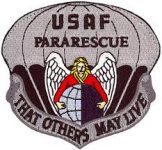Metzora’ מְּצֹרָ֔ע (Leper) LEVITICUS 14:1-15:33
PROPHETS : MALACHI 3:4-24 | GOSPEL : MATTHEW 17:9-13

by Min. Donald H. Garrett
TORAH:
Metzora’ is the person with tzaraas. Tzaraas is commonly translated as leprosy. However, the sages disagree that this is what we know as true leprosy. Instead, they say this is a spiritual disease set upon an individual for sins of slander, bloodshed, false oaths, sexual immorality, pride, robbery, and selfishness. The tzaraas mentioned are white patches on the skin, and according to the Torah section, tzaraas can be healed. This Torah section starts with the purification from the tzaraas.
Before you can be considered healed from the affliction, you must show yourself to the priest (today it may be your rabbi, minister, or pastor as well). The ceremony of purification requires 2 birds, cedar wood, crimson thread, and hyssop. One bird is slaughtered over spring water and the other bird and items are dipped into the blood of the slaughtered bird, which is sprinkled on the metzora’ (person with healed tzaraas). After this, the metzora’ must wash his clothes, shave off ALL his hair, and wash himself. Only then does he become pure. He may then freely associate with everyone else again. However, note that he may not enter his own home for another 7 days.
But wait, there’s more. The purification does not end there. On the 7th day, he must again shave off ALL of his hair (Torah specifies this very strongly here: head, beard, eyebrows, and all his hair). This would take awhile to accomplish as it would include shaving the entire body: arms, back, chest, genital area, head, and legs. The metzora’ must then bathe (immerse) his clothes and himself again.
On the eighth day is the final stage of purification. He must bring necessary sacrifices to the altar to provide for his atonement. Here the Torah makes a way for even the poor person to be atoned with a sacrifice. In other words, YaH is telling us the person must be completely atoned and purified once he is healed from the affliction, regardless of monetary or social standing.
The last part of Chapter 14 deals with tzaraas affliction of a house. I’m not sure what type of affliction this is, but the Torah describes it as deep green or deep red. Keep in mind these tzaraas, whether on house, clothes, or human, are considered divinely placed there. I can assume the house tzaraas would include different types of algae, mildews, molds, and more that contaminate the living environment. Anyway, the house is first quarantined for 7 days. If tzaraas still remains, the section of the house with tzaraas is removed and discarded in a special place. The entire house is then scraped clean and the section rebuilt. The house is then inspected again. If the tzaraas returns after the replacement and cleaning, the entire house is condemned and torn down. If it has not returned, the house is declared pure and the same 2 bird ceremony (as for the metzora’) is performed on the house. The Torah also says that anyone entering the house during the quarantine period must wash themselves afterwards.
This is the law for the tzaraas affliction, concerning all things and people, on the day of contamination and the day of purification.
Chapter 15 now deals with genital discharges of the male and female. First is the male and the discharge, spoken of in the beginning, sounds like some form of infection or medical problem that would exude puss and/or blood from the genital or anus, or cause the genital or anus to be blocked. Today, we perform almost the exact same cleansing spoken of by the Torah in this section. Here it says that everything the man touches, wears, sits on, or sleeps on becomes contaminated and must be washed. The man himself must wash his hands before touching another person and prevent contamination. Medical professionals today even take this a step further by wearing gloves and disposable clothing to prevent contamination, as well as constant scrubbing and washing. We also use soap (and other cleansers) and sanitizers along with the water today to clean the contamination and provide an additional defense against further contamination. Even after the healing of this type of discharge, the man must remain separated for 7 days and on the 8th day bring a sin offering and a burnt offering to the priest for atonement.
The second male discharge spoken of is the discharge of semen. This form of discharge, which is normal and healthy, only requires washing the entire body (and any garment or bedding) afterwards. Yet the man is still considered contaminated until evening. It is interesting to note here that the Torah goes on to separately specify the discharge of semen during sexual intercourse with a woman. Both must then wash themselves. Because this is listed separately, it could be argued that seminal discharge outside of sexual intercourse is allowable by the Torah. If this is the case, then masturbation and oral sex, within marital relations, is not against the Torah. This would explain why in the New Testament it says anything done in the marital bed is undefiled, thus proving there is no discrepancy between the Torah and New Testament. However, let us also remember that this WOULD NOT justify any form of homosexuality, even if the two males are married by man’s law. Marriage by YaH’s Law can only occur between a male and a female (man and woman). Anything outside that is against YaH’s Law and becomes sin.
Next, the Torah covers female discharges. Here the discharge is specifically listed as a blood discharge, commonly referred to as the time of a woman’s period. The woman is commanded to take a 7-day separation time. It has been argued that this is inhumane to separate the woman for 7 days. However, let us examine that. Nowhere in this section of the Torah does it say the woman is completely separated from other people or her husband. Why, because it specifically says anyone who touches her bedding, who touches her utensils, or is upon the bedding or utensil she is sitting on. This suggests there is still human interaction between her and others during this time. We see nothing here implying the woman is “locked away” for 7 days without human interaction.
Although Leviticus 18:19 says “You shall not approach a woman in her time of unclean separation, …”, here the Torah does not forbid sexual relations with her during this time. However, the man who has the relations with her takes upon himself the same 7-day separation time of being considered unclean. The understanding here then is it is best to keep away from sexual relations with her, yet allowed if the man cannot control his urge to do so. In other words, it is better for him to come to her rather than stepping outside the marriage.
If a woman’s flow lasts more than 7 days, she is to be considered separated until 7 days AFTER the flow finally ends. All applicable contamination rules and cleansing oneself still apply during this time.
At the end of the 7 days (or extended 7 days after the flow ends), she shall take a sin offering and burnt offering to the priest on the 8th day. This would also apply to a man who took on her separation as described above.
Leviticus 15:32-33, “32 This is the law of the man with a discharge, … a seminal discharge, 33 … a woman who suffers through her separation, … a person who has his flow, whether male or female, and … a man who lies with a contaminated woman” (Tanach). Verse 33 section 2 seems to cover the infectious discharge or blockage contamination for the woman as is described in verse 32 for the man.
(c) Copyright April 2021 Min. Donald H. Garrett and Odon Obadyah Ministries, Inc.
Previous: TAZRIY’A
Next: ACHAREY MOTH







